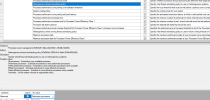All of my testing shows that W11 has noticeably worse DPC latency, and it benchmarks slightly worse in some areas, probably due to the bugs that are still being fixed. W10 is not obsolete, it doesn't reach end support until October 2025, and even that is meaningless because "security" is massively overhyped. I ran Windows XP until 2021 on my gaming computer without issues, and it gave me superior performance to any other OS available. I only moved on because I needed modern software and it wasn't available anymore (browsers, tools, Steam, etcetera), along with wanting to build a new gaming computer and needing to take advantage of things like 64-bit and so forth. Most games on the market are still single-threaded, DX9, and 32-bit, it wasn't until the release of the PS5/Xbox that gaming really started to modernize.
Also, W11 is actually W10 at the core, with new stuff added on. I won't move on because I know from literally hundreds of hours of research, benchmarking, testing, and experimenting that W10 simply performs better than W11 at this moment in time. Will that always be the case? Probably not. W11 is still very new, and all operating systems take several years to mature. Look how rough W10 started out, now it's a stable OS only after many years of patching. XP had a rough start too, but by SP2 and SP3 it got ironed out. Microsoft is also constantly evolving W11 right now, while W10 is in maintenance mode, and so W10 is easier to tweak and keep it the way you want since you aren't fighting Microsoft's changes anymore.
The whole debate over newer features, like e-cores, hags, directstorage, and so forth being better in W11 is mostly moot, as these are really just news articles hyping things up. People don't seem to understand that all of these new features take a long time to become mainstream, as many of these types of features also require support in software (games) for features of this nature to even work at all, or to work at a level that it's noticeable. Drivers also need time to mature and take advantage of newer features too, and many of these features actually cause more problems than they are worth on their initial release because of the lack of support. Look at all the struggles that happened with SSD when they first came out, there was firmware issues, driver issues, Windows issues, and all sorts of misinformation about how they work.
Anyway, it doesn't really matter, people will do what they want to do. Humans are stubborn and many people when confronted with facts will actually double down even when they know they are wrong, will resort to straw man attacks, or walk away without acknowleding they were wrong. So, I don't type any of this to try to convince people, but rather to put the information out there for all the lurkers whom can then see both sides of the fence and do their own additional research and then choose what works for them.

